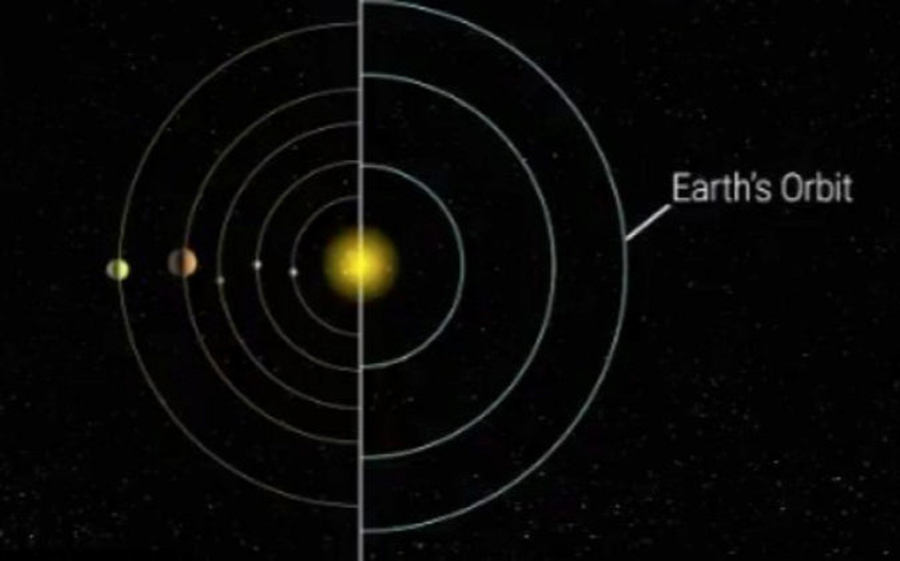For the first time, our Solar System’s star is not the only one surrounded by eight different planets.
According to data recently given by NASA and Google, scientists found that Kepler-90 – a start floating in a constellation named Draco, 2,545 light-years away from Earth – has an eighth planet orbiting around it.
The experts already knew about the seventh planet, but wondered if there was another one. Thanks to the Google Artificial Intelligence, the team was able to look at NASA’s data and discover the immense rock. They said that it is 30 percent bigger than the Earth.
This is the first time that experts find another star system with the same number of planets. It makes them think there are a few others more to be discovered.

Christopher Shallue, a senior software engineer at Google AI in California, and Andrew Vanderburg, astronomer and NASA Sagan postdoctoral fellow at the University of Texas, Austin, wanted to develop a machine able to differentiate images of exoplanets. However, they started by making one able to distinguish cats and dogs.
The experts trained the computer with Kepler database. Thus, to know when the light of a star reflected a planet’s changes. According to them, the machine was accurate 96 percent of the time.
Kepler was launched in 2009 to find exoplanets. In just one part of the space, it has already spotted 150,000 stars whose lights can reflect over some worlds. In total, the scientists informed that they already have 35,000 signals that might mean the existence of planets.
If the researchers lose track of weaker signals or miss them, they would also be losing the possibility to find new exoplanets. This is why they trained the computer to look for weak signs in systems whose stars are supposed to be surrounded by different worlds.
“Machine learning really shines in situations where there is so much data that humans can’t search it for themselves,” Shallue told CNN.
Finally, another star system with eight planets
The eighth planet discovered by the scientists is, in fact, the third in the Kepler-90 System’s order. They named it Kepler-90i, and it can’t be inhabited by humans or other species found on Earth. According to them, it is small, “sizzling” hot and rocky, and it takes 14.4 Earth-days to surround its star.
Mercury, the first and closest planet in our Solar Systems, takes 88 days to orbit the sun.
“The Kepler-90 star system is like a mini version of our solar system. You have small planets inside and big planets outside, but everything is scrunched in much closer,” Vanderburg said.

Although Kepler-90 is orbited by eight worlds, just like ours, we cannot compare both of their sizes. The Kepler-90 System’s planets are grouped together, and the distance between the last planet and its star is almost the same one there is between the Earth and our sun.
Paul Hertz, director of NASA’s Astrophysics Division in Washington, said that they expected these “exciting discoveries” lurking in the Kepler data they had archived. The only thing they needed is the “right tool or technology to unearth them.”
Besides, he said that this information would be a “treasure trove” that other experts will be able to use fpr further research.
Source: NASA
